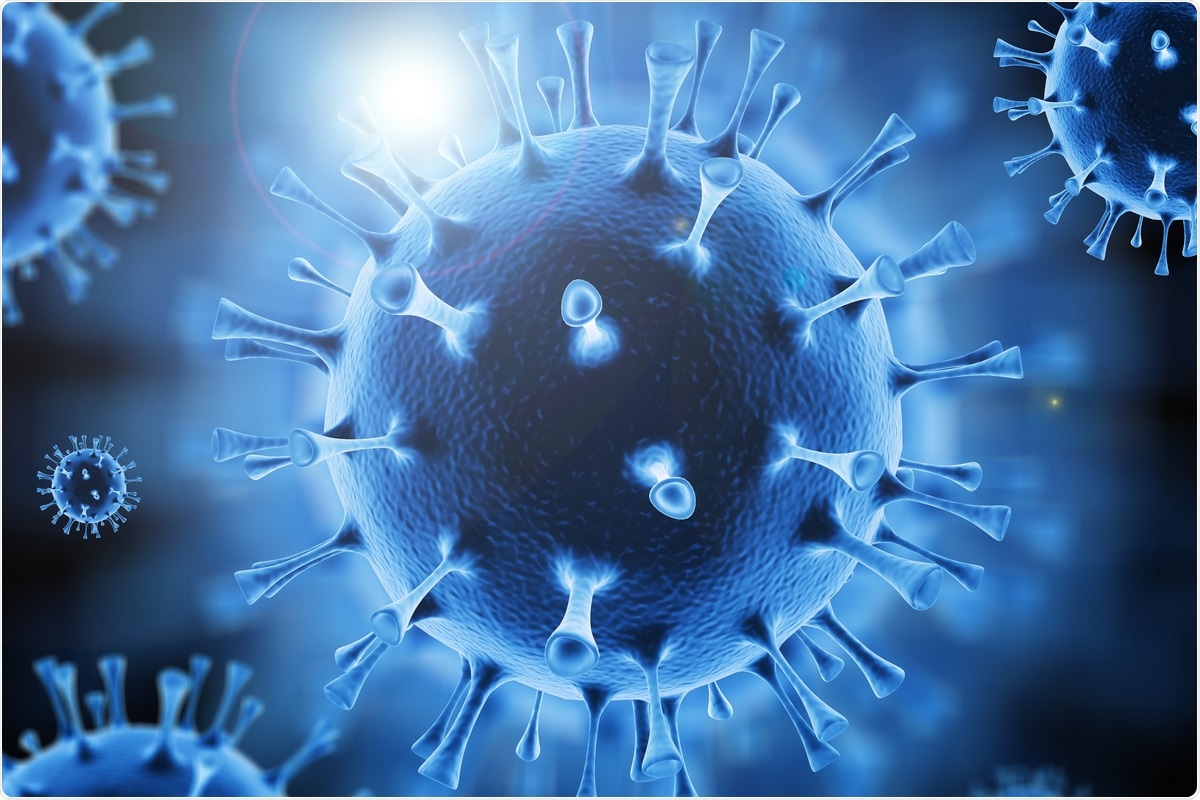Since the onset of the coronavirus disease 2019 (COVID-19) pandemic, more than 220 million people have been infected, and approximately 4.56 million people have lost their lives worldwide. The causative agent of the pandemic is severe acute respiratory syndrome coronavirus-2 (SARS-CoV-2), which is a highly infectious RNA virus belonging to the family Coronaviridae.
 Study: Trajectory of viral load in a prospective population-based cohort with incident SARS-CoV-2 G614 infection. Image Credit: Billion Photos/ Shutterstock
Study: Trajectory of viral load in a prospective population-based cohort with incident SARS-CoV-2 G614 infection. Image Credit: Billion Photos/ Shutterstock
Background
Scientists have worked at an unprecedented rate, and by the end of 2020, several COVID-19 vaccines received emergence use authorization (EUA) from several global regulatory bodies. Although vaccination programs have been initiated in many countries, the virus continues to spread for two reasons: vaccinating the entire world population is not easy, and at present, the majority of the global population remains unvaccinated.
Another reason is the continual emergence of SARS-CoV-2 variants. Some of the variants, such as the Delta and Alpha variants, have been classified as variants of concern (VoC) which are more virulent compared to the original strain and can also evade the immune protection elicited due to vaccination or natural SARS-CoV-2 infection. Some studies have revealed a reduction in the neutralizing activity of antibodies in convalescent plasma, which means the efficacy of the approved vaccines against SARS-CoV-2 variants is in question.
SARS-CoV-2 and early viral shedding
The early viral shedding of SARS-CoV-2 remains unclear. Several studies have monitored COVID-19 patients who required hospitalization and reported the SARS-CoV-2 nasal detection characteristics from the initial diagnosis to the course of infection. However, a limited number of studies are available that include outpatients and report their viral dynamics and symptoms from the time of acquisition of infection rather than the time of diagnosis. Also, not many studies are available related to early viral shedding after infection with SARS-CoV-2 VoC.
Further, it is important to understand if there is a difference in viral shedding in SARS-CoV-2 original strain carrying the D614G Spike mutation (G614 virus). Scientists have revealed that compared to the original SARS-CoV-2 strain, the VoC have a higher viral load in respiratory samples and prolonged shedding. Characterization of early viral shedding is extremely important as it can indicate the transmission of new variants. Thereby, more time to formulate preventive measures to curb further spread would be available.
A New Study
In a study available on the preprint server medRxiv*, researchers aimed to characterize the early viral shedding of patients with incident COVID-19 infection. Scientists have registered asymptomatic individuals exposed to SARS-CoV-2 in a prospective study before the documented emergence of SARS-CoV-2 VoC. Researchers conducted a randomized controlled trial of 829 community-based asymptomatic participants recently exposed to a COVID-19 positive person (less than 96hrs). All the participants were asked to collect mid-turbinate swabs daily for a period of 14-days and were subjected to a real-time reverse-transcription polymerase chain reaction (RT-PCR) assay.
Researchers were cautious that individuals included in this study were SARS-CoV-2 negative and that the samples were collected only after being recently exposed to a COVID-19 patient. These samples were used to evaluate SARS-CoV-2 viral shedding characteristics, and shedding trajectories were investigated using piece-wise linear mixed-effects modeling. The entire genome sequencing was conducted on the samples with cycle threshold (Ct) <34.
A preprint version of the study is available on the medRxiv* server while the article undergoes peer review.
Main Findings
Researchers found that 57% of the women with a median age of 37 years developed an incident infection during the 14-days of being exposed to a COVID-19 positive person. Two hundred fifteen sequenced samples were assigned to 15 lineages that belonged to the G614 variant. This study reported that 43% of the participants shed virus for day 1, 18% for 2-6 days, and 32% for more than seven days, and the median peak viral load Ct was found to be 38.5, 36.7, and 18.3, respectively.
Researchers observed the peak average viral load on day 3 of viral shedding. This research further reported that symptomatic COVID-19 patients have higher viral load than asymptomatic patients, which was determined by studying the Ct values. Scientists used a statistical model to determine the median time from shedding to peak viral load to be 1.4 days. The study further revealed a median of 9.7 days before virus clearance.
Conclusions
The current study had some limitations. One of the limitations was that the self-sampling technique and specimen degradation could provide false-negative results. Although samples were collected frequently, there was a margin where the authors missed the peak viral load in those with shorter shedding duration. This study showed the trajectory of SARS-CoV-2 G614 variant infections, where the viral replication peaked rapidly, followed by a relaxed decline. The duration of the viral shedding was heterogeneous, and this trajectory indicated a limited period for effective antiviral intervention.
*Important Notice
medRxiv publishes preliminary scientific reports that are not peer-reviewed and, therefore, should not be regarded as conclusive, guide clinical practice/health-related behavior, or treated as established information.
- Stankiewicz Karita, H. et al. (2021) "Trajectory of viral load in a prospective population-based cohort with incident SARS-CoV-2 G614 infection". medRxiv. doi: 10.1101/2021.08.27.21262754. https://www.medrxiv.org/content/10.1101/2021.08.27.21262754v1.full-text
Posted in: Medical Science News | Medical Research News | Disease/Infection News
Tags: Antibodies, Assay, Convalescent Plasma, Coronavirus, CT, Efficacy, Genome, Mutation, Pandemic, Polymerase, Polymerase Chain Reaction, Research, Respiratory, RNA, SARS, SARS-CoV-2, Severe Acute Respiratory, Severe Acute Respiratory Syndrome, Syndrome, Transcription, Virus

Written by
Dr. Priyom Bose
Priyom holds a Ph.D. in Plant Biology and Biotechnology from the University of Madras, India. She is an active researcher and an experienced science writer. Priyom has also co-authored several original research articles that have been published in reputed peer-reviewed journals. She is also an avid reader and an amateur photographer.
Source: Read Full Article
